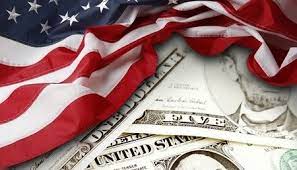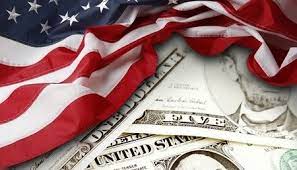
According to a Federal Reserve poll released on Wednesday, U.S. economic activity increased little between late February and early April, and businesses indicated they expected inflation pressures to remain stable. These findings continue recent patterns that have prevented the central bank from lowering interest rates.
A day after Fed Chair Jerome Powell abandoned previous guidance on when to cut its benchmark interest rate and stated that monetary policy needs to be restrictive for a longer period of time due to a string of stronger-than-expected inflation readings, the US central bank released its most recent assessment of the state of the economy.
"Total economic activity increased somewhat... Ten of the twelve districts saw either slight or moderate economic growth," the Federal Reserve stated in the "Beige Book" study, which surveyed business associates throughout the 12 districts of the central bank until April 8. "The economic outlook among contacts was cautiously optimistic, on balance."
Before the year began, Powell and his associates found solace in statistics demonstrating that, despite robust economic expansion and low jobless rates, inflation—which reached a 40-year high two years prior—was gradually declining towards the Federal Reserve's goal rate of 2%.
The Fed tentatively projected three rate reduction this year in March, but that pace has since halted and even reversed, raising doubts about its ability to lower its policy rate in the months to come. The likelihood of a second cut is decreasing, and investors now only anticipate a first cut in September.
Firms surveyed by the Fed indicated that, overall, the pace of price increases was modest. However, six of the central bank's districts reported moderate increases in energy prices, and contacts in a few of them—mostly manufacturers—saw near-term upside risks in both input and output prices.
U.S. equities declined during erratic trading on Wednesday as traders kept evaluating when to lower interest rates and following a string of weak corporate results.
Despite the fact that businesses regularly reported that their capacity to pass cost increases on to customers "had weakened considerably" in recent months, the survey concluded that "on balance, contacts expected that inflation would hold steady at a slow pace moving forward."
Following its policy meeting from April 30 to May 1, the Fed is anticipated to maintain its policy rate in the same range as it has been since last July—5.25% to 5.50%.
In February, inflation increased somewhat to 2.5% annual rate by the Fed's preferred measure, but a measure that excludes the more volatile food and energy components grew at a 2.8% rate annually.
The Fed poll also revealed that overall employment increased at a modest rate. Numerous Fed districts reported that annual pay growth rates had lately returned to historical averages, but many Fed districts continued to experience persistent shortages of suitable applicants for specific positions despite an increase in the number of available workers.
In an interview with the Cleveland Fed, one restaurateur stated, "We've seen wages stabilise and haven't had to escalate wages to hire good people."
(Source:www.reuters.com)
A day after Fed Chair Jerome Powell abandoned previous guidance on when to cut its benchmark interest rate and stated that monetary policy needs to be restrictive for a longer period of time due to a string of stronger-than-expected inflation readings, the US central bank released its most recent assessment of the state of the economy.
"Total economic activity increased somewhat... Ten of the twelve districts saw either slight or moderate economic growth," the Federal Reserve stated in the "Beige Book" study, which surveyed business associates throughout the 12 districts of the central bank until April 8. "The economic outlook among contacts was cautiously optimistic, on balance."
Before the year began, Powell and his associates found solace in statistics demonstrating that, despite robust economic expansion and low jobless rates, inflation—which reached a 40-year high two years prior—was gradually declining towards the Federal Reserve's goal rate of 2%.
The Fed tentatively projected three rate reduction this year in March, but that pace has since halted and even reversed, raising doubts about its ability to lower its policy rate in the months to come. The likelihood of a second cut is decreasing, and investors now only anticipate a first cut in September.
Firms surveyed by the Fed indicated that, overall, the pace of price increases was modest. However, six of the central bank's districts reported moderate increases in energy prices, and contacts in a few of them—mostly manufacturers—saw near-term upside risks in both input and output prices.
U.S. equities declined during erratic trading on Wednesday as traders kept evaluating when to lower interest rates and following a string of weak corporate results.
Despite the fact that businesses regularly reported that their capacity to pass cost increases on to customers "had weakened considerably" in recent months, the survey concluded that "on balance, contacts expected that inflation would hold steady at a slow pace moving forward."
Following its policy meeting from April 30 to May 1, the Fed is anticipated to maintain its policy rate in the same range as it has been since last July—5.25% to 5.50%.
In February, inflation increased somewhat to 2.5% annual rate by the Fed's preferred measure, but a measure that excludes the more volatile food and energy components grew at a 2.8% rate annually.
The Fed poll also revealed that overall employment increased at a modest rate. Numerous Fed districts reported that annual pay growth rates had lately returned to historical averages, but many Fed districts continued to experience persistent shortages of suitable applicants for specific positions despite an increase in the number of available workers.
In an interview with the Cleveland Fed, one restaurateur stated, "We've seen wages stabilise and haven't had to escalate wages to hire good people."
(Source:www.reuters.com)





